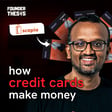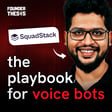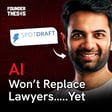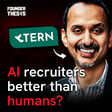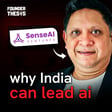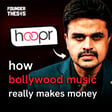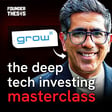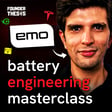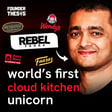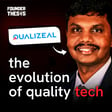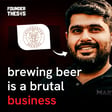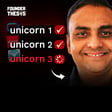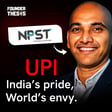
IndiaMART’s 25-Year Journey of disrupting B2B commerce | Dinesh Agarwal
"It takes much longer than you think. Everybody thinks that things can be changed big time in three to five years. It probably takes more, you know, seven to ten years." This powerful insight from Dinesh Agarwal underscores the journey of building IndiaMART, a testament to perseverance and a long-term vision that began when the internet was nascent in India. It's a crucial reminder for founders that enduring businesses are marathons, not sprints.
Dinesh Agarwal is the Founder and CEO of IndiaMART.com, India's largest online B2B marketplace. Starting with a modest seed capital of just Rs 40,000 in 1996, he steered IndiaMART to become a publicly listed company that surpassed Rs 1000 crore in revenue in FY2023 and facilitates nearly 1% of India's GDP. His journey spans over 25 years, building a platform that now employs thousands and serves millions of SMEs.
Key Insights from the Conversation:
- The Internet Spark: Witnessing the Mosaic browser in the US sparked the vision for an interconnected digital marketplace for India.
- Bootstrapped Beginnings: IndiaMART's foundation was built with immense "sweat equity," including manually mailing free listing forms to exporters.
- Resilience Through Crises: The company navigated the dot-com bust by maintaining profitability and weathered the 9/11 impact on exports by adapting and focusing.
- The Game-Changing Pivot: Shifting focus from exports to the domestic Indian B2B market around 2007-08 was a masterstroke that tapped into a burgeoning opportunity.
- Learning from Scale & Failure: The aggressive "52 offices in 52 weeks" expansion taught crucial lessons about sustainable growth, and the Tolexo venture provided insights that strengthened the core IndiaMART platform.
- Values as Bedrock: Core principles derived from Indian epics and leaders like Gandhi guided decisions, especially during tough times, emphasizing commitment and simplicity.
- Long-Term Vision: Building a significant enterprise is a lifelong journey, requiring passion and adaptability beyond initial financial goals.
Chapters:
- 00:00:00 - From US Internet Boom to India: The Spark
- 00:08:15 - Rs 40,000 & a Fax Machine: Starting IndiaMART
- 00:17:30 - Surviving the Dot-Com Bust as a Profitable Venture
- 00:26:45 - 9/11 Crisis & The Critical Pivot to Domestic B2B
- 00:35:10 - "52 Offices in 52 Weeks": Lessons from Hyper-Growth
- 00:44:05 - When a $100M Funding Fell Through: Back to Basics
- 00:52:50 - The Tolexo Experiment & Strengthening IndiaMART Core
- 01:01:20 - Leveraging Demonetization & Jio Wave for Growth
- 01:09:40 - The IPO Journey: Resilience, Timing, and Wealth Creation
- 01:18:15 - Future Vision: Building a B2B Ecosystem for India
- 01:25:30 - "Takes Longer Than You Think": Advice for Founders
Hashtags for YouTube Description:
#DineshAgarwal #IndiaMART #FounderThesis #IndianEntrepreneur #StartupIndia #B2Becommerce #Bootstrapping #IPOjourney #BusinessLessons #MakeInIndia #DigitalIndia #Entrepreneurship #StartupStory #TechIndia #Leadership #IndianStartups #SME #Marketplace #OnlineBusiness #Motivation
